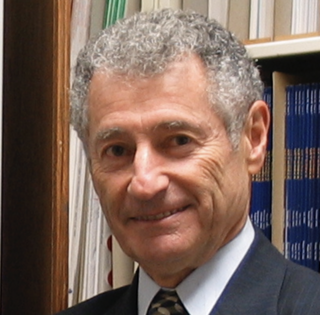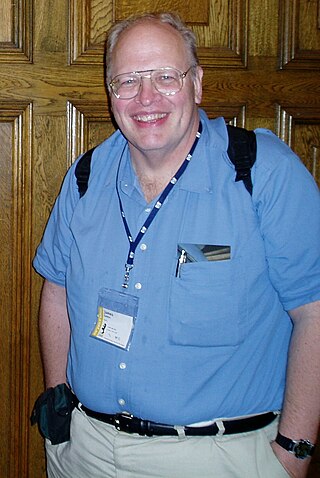Related Research Articles
Quality of service (QoS) is the description or measurement of the overall performance of a service, such as a telephony or computer network, or a cloud computing service, particularly the performance seen by the users of the network. To quantitatively measure quality of service, several related aspects of the network service are often considered, such as packet loss, bit rate, throughput, transmission delay, availability, jitter, etc.

A router is a computer and networking device that forwards data packets between computer networks, including internetworks such as the global Internet.
Traffic shaping is a bandwidth management technique used on computer networks which delays some or all datagrams to bring them into compliance with a desired traffic profile. Traffic shaping is used to optimize or guarantee performance, improve latency, or increase usable bandwidth for some kinds of packets by delaying other kinds. It is often confused with traffic policing, the distinct but related practice of packet dropping and packet marking.

Robert Elliot Kahn is an American electrical engineer who, along with Vint Cerf, first proposed the Transmission Control Protocol (TCP) and the Internet Protocol (IP), the fundamental communication protocols at the heart of the Internet.
Network congestion in data networking and queueing theory is the reduced quality of service that occurs when a network node or link is carrying more data than it can handle. Typical effects include queueing delay, packet loss or the blocking of new connections. A consequence of congestion is that an incremental increase in offered load leads either only to a small increase or even a decrease in network throughput.

Leonard Kleinrock is an American computer scientist and Internet pioneer. He is Distinguished Professor Emeritus of Computer Science at UCLA's Henry Samueli School of Engineering and Applied Science. Kleinrock made several important contributions to the field of computer science, in particular to the mathematical foundations of data communication in computer networking. He has received numerous prestigious awards.

Jim Gettys is an American computer programmer.

Random early detection (RED), also known as random early discard or random early drop, is a queuing discipline for a network scheduler suited for congestion avoidance.

Van Jacobson is an American computer scientist, renowned for his work on TCP/IP network performance and scaling. He is one of the primary contributors to the TCP/IP protocol stack—the technological foundation of today’s Internet. Since 2013, Jacobson is an adjunct professor at the University of California, Los Angeles (UCLA) working on Named Data Networking.
Transmission Control Protocol (TCP) uses a congestion control algorithm that includes various aspects of an additive increase/multiplicative decrease (AIMD) scheme, along with other schemes including slow start and a congestion window (CWND), to achieve congestion avoidance. The TCP congestion-avoidance algorithm is the primary basis for congestion control in the Internet. Per the end-to-end principle, congestion control is largely a function of internet hosts, not the network itself. There are several variations and versions of the algorithm implemented in protocol stacks of operating systems of computers that connect to the Internet.
Bandwidth management is the process of measuring and controlling the communications on a network link, to avoid filling the link to capacity or overfilling the link, which would result in network congestion and poor performance of the network. Bandwidth is described by bit rate and measured in units of bits per second (bit/s) or bytes per second (B/s).
Head-of-line blocking in computer networking is a performance-limiting phenomenon that occurs when a queue of packets is held up by the first packet in the queue. This occurs, for example, in input-buffered network switches, out-of-order delivery and multiple requests in HTTP pipelining.
In routers and switches, active queue management (AQM) is the policy of dropping packets inside a buffer associated with a network interface controller (NIC) before that buffer becomes full, often with the goal of reducing network congestion or improving end-to-end latency. This task is performed by the network scheduler, which for this purpose uses various algorithms such as random early detection (RED), Explicit Congestion Notification (ECN), or controlled delay (CoDel). RFC 7567 recommends active queue management as a best practice.

Nicholas (Nick) William McKeown FREng, is a Senior Fellow at Intel, a professor in the Electrical Engineering and Computer Science departments at Stanford University, and a visiting professor at Oxford University. He has also started technology companies in Silicon Valley.
Hari Balakrishnan is the Fujitsu Professor of Computer Science and Artificial Intelligence in the Department of Electrical Engineering and Computer Science at MIT, and the Co-founder and CTO at Cambridge Mobile Telematics.
Bufferbloat is the undesirable latency that comes from a router or other network equipment buffering too many data packets. Bufferbloat can also cause packet delay variation, as well as reduce the overall network throughput. When a router or switch is configured to use excessively large buffers, even very high-speed networks can become practically unusable for many interactive applications like voice over IP (VoIP), audio streaming, online gaming, and even ordinary web browsing.
CoDel is an active queue management (AQM) algorithm in network routing, developed by Van Jacobson and Kathleen Nichols and published as RFC8289. It is designed to overcome bufferbloat in networking hardware, such as routers, by setting limits on the delay network packets experience as they pass through buffers in this equipment. CoDel aims to improve on the overall performance of the random early detection (RED) algorithm by addressing some of its fundamental misconceptions, as perceived by Jacobson, and by being easier to manage.
In the field of computer networking, TCP pacing is the denomination of a set of techniques to make the pattern of packet transmission generated by the Transmission Control Protocol less bursty. Where there could be insufficient buffers in switches and routers, TCP Pacing is intended to avoid packet loss due to exhaustion of buffer memory in network devices along the path. It can be conducted by the network scheduler.

Saverio Mascolo is an Italian information engineer, academic and researcher. He is the former Head of the Department of Electrical Engineering and Information Science and the professor of Automatic Control at Department of Ingegneria Elettrica e dell'Informazione (DEI) at Politecnico di Bari, Italy.
References
- ↑ "About Us" . Retrieved 2015-08-20.
- ↑ Nichols, Kathleen; Jacobson, Van (2012-05-06). "Controlling Queue Delay". ACM Queue. 10 (5). ACM Publishing: 20. doi: 10.1145/2208917.2209336 .
- ↑ Gettys, Jim; Nichols, Kathleen (January 2012). "Bufferbloat: Dark Buffers in the Internet". Communications of the ACM. 55 (1). ACM: 57–65. doi: 10.1145/2063176.2063196 . Retrieved 2015-08-20.
{{cite journal}}: Cite journal requires|journal=(help) - ↑ Kathleen M. Nichols at DBLP Bibliography Server
- ↑ "Kathleen Nichols Linkedin Bio" . Retrieved 2015-08-20.